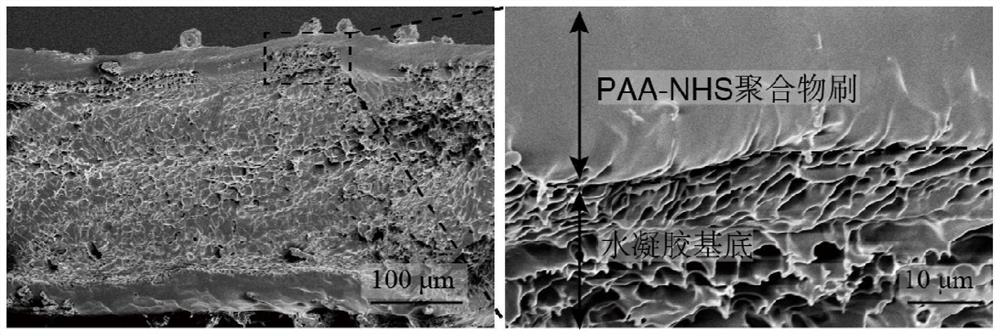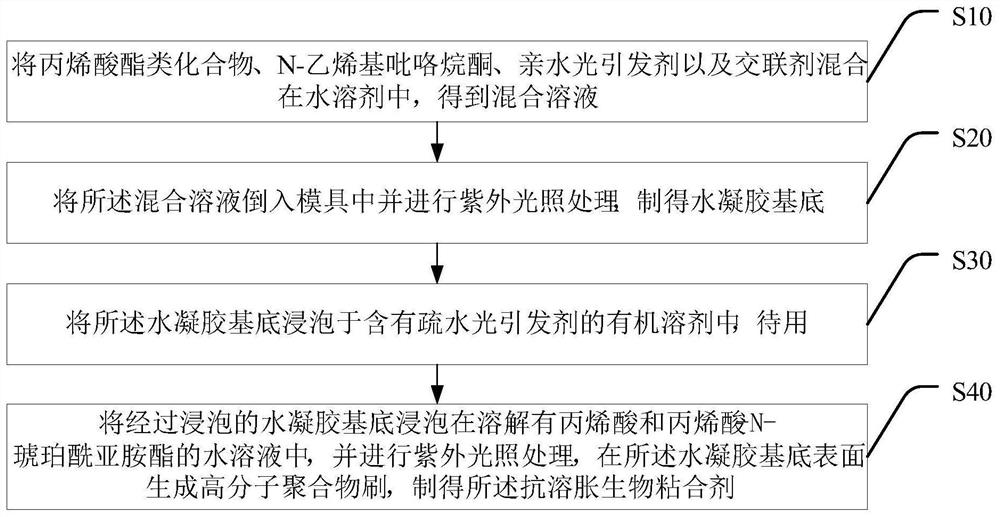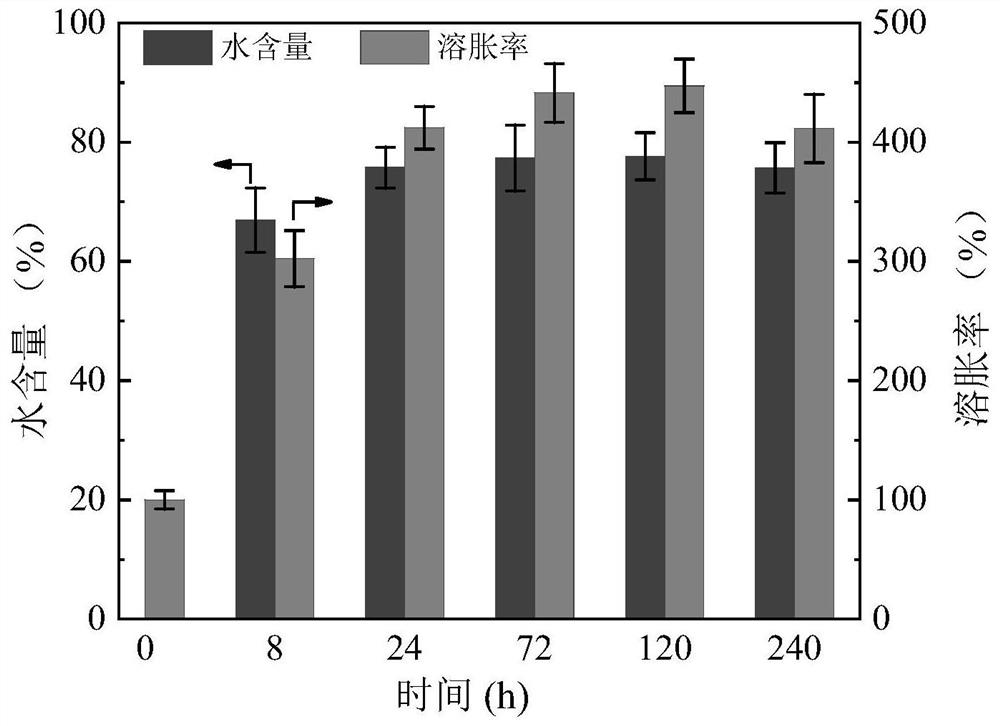Anti-swelling biological adhesive as well as preparation method and application thereof
A bio-adhesive and anti-swelling technology, applied in the field of medical materials, can solve the problems of poor performance of bio-adhesives, achieve good anti-swelling performance, ensure adhesion stability, and good adhesion performance
- Summary
- Abstract
- Description
- Claims
- Application Information
AI Technical Summary
Problems solved by technology
Method used
Image
Examples
Embodiment 1
[0050] Hydrogel substrate preparation scheme optimization technical route:
[0051] The anti-swelling performance of the hydrogel substrate is the key, and the choice of acrylate plays a decisive role. This program takes hydroxyethyl methacrylate (HEMA) as a case example to illustrate the preparation method of the substrate hydrogel. After selecting the HEMA, N-vinylpyrrolidone (NVP) was introduced to adjust the mechanical properties of the hydrogel substrate and optimize the polymerization conditions. Mix HEMA and NVP according to the ratio shown in Table 1, and control the total weight to 20wt%. After mixing the small molecule monomers, add crosslinking agent (PEG(m)-DMA) and photoinitiator (both use 0.5wt% I2959) at one time, then use the rotation and revolution instrument to carry out further mixing and defoaming treatment, and pour Nitrogen gas was introduced into the mold before oxygen removal treatment. In the mold with a set thickness, the polymerization reaction was ...
Embodiment 2
[0060] The optimized technical route for the preparation of hydrogel substrates with bioadhesive properties:
[0061] In order to introduce the polymer with bioadhesive properties into the anti-swelling substrate, the present invention designs by enriching the photoinitiator on the film surface of the hydrogel substrate, and then soaking in the monomer solution dissolved with AA and AA-NHS, The PAA-NHS macromolecular polymer was prepared by ultraviolet light-induced polymerization, which was embedded in the hydrogel substrate through a penetrating method, and a layer of polymer brushes grew on its surface at the same time. The optimization of the photoinitiator, the ratio of AA and AA-NHS, and the optimization of the reaction time are designed in this technical route. Table 3 is the optimization of the photoinitiator BP; Table 4 is the optimization of the factors affecting the polymerization of AA and AA-NHS.
[0062] Table 3: Optimization of photoinitiator BP
[0063] ...
Embodiment 3
[0069] Bioadhesive water content and swelling rate test
[0070] The bioadhesive was cut into cubes 2 cm long, 2 cm wide, and 5 mm thick. Soak in PBS solution with pH 2.0, take them out at different times (8, 24, 72, 120 and 240 h), weigh them after removing the surface free water, and finally calculate their water content and swelling rate. Test results such as image 3 and shown in Table 5.
[0071] Table 5: Measurement results of bioadhesive swelling properties
[0072] Soaking time (h) Water content (wt%) Swelling rate (%) 0 0 100 8 69.9 302 24 75.7 412 72 77.3 441 120 77.6 447 240 78.1 451
[0073] The bioadhesive is soaked in an acidic buffer (pH 2.0), and remains stable after absorbing water within 24 hours to reach the swelling equilibrium, and continues to monitor for 10 days. The results show that when the adhesive reaches the swelling equilibrium, the water content is still lower than 80wt%. , is not free t...
PUM
| Property | Measurement | Unit |
|---|---|---|
| shear strength | aaaaa | aaaaa |
Abstract
Description
Claims
Application Information
 Login to View More
Login to View More - R&D
- Intellectual Property
- Life Sciences
- Materials
- Tech Scout
- Unparalleled Data Quality
- Higher Quality Content
- 60% Fewer Hallucinations
Browse by: Latest US Patents, China's latest patents, Technical Efficacy Thesaurus, Application Domain, Technology Topic, Popular Technical Reports.
© 2025 PatSnap. All rights reserved.Legal|Privacy policy|Modern Slavery Act Transparency Statement|Sitemap|About US| Contact US: help@patsnap.com



